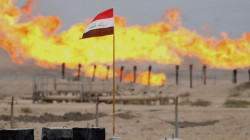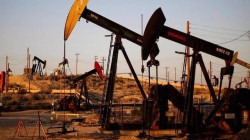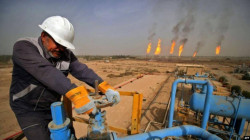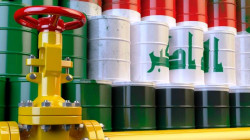The Oil Price Shock Will Reverberate Into Next Year
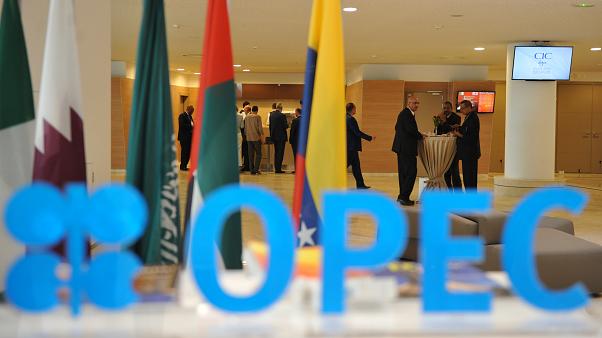
Shafaq News/ Wall Street may be abuzz with talk of recession next year, but it’s a different story in the energy market. Most traders, policy makers and analysts see oil demand growing through 2023 and supply struggling to keep pace.
In private, Western officials worry Brent crude will reach $150 a barrel soon from about $120 now. Some fear it keeps going higher, with wild chatter about oil hitting $175 or even $180 by the end of 2022, driven by post-Covid pent-up demand and European sanctions against Russia. And the shock won’t end this year.
Amid widespread fears of an oil price spike this summer, another storm is developing over the horizon: The oil shock won’t end in 2022. It’s almost certain to roll into next year.
The International Energy Agency will publish its first look at the 2023 supply and demand oil balance on Wednesday – marking the start of the annual pivot when investors increasingly focus their attention on the following year. Already, money has been flowing into the December 2023 Brent contract, lifting its price close to $100 — a clear sign traders see the tight market lasting. The higher-for-longer oil price outlook will add to global inflationary pressures and erode the margins of manufacturing companies.
Guzzling Barrels
Despite fears of a recession, oil traders still anticipate that global crude consumption will expand in 2023
hile everyone waits for the IEA’s forecast, commodity trading houses, oil companies, and OPEC nations and Western consuming countries have already run their numbers. Their consensus for 2023 oil demand varies between an extra 1 million barrels per day and 2.5 million barrels per day. In 2022, it is likely to have grown by 1.8 million barrels a day, according to the IEA, to about 100 million. Typically, anything above 1 million a day in annual demand growth is seen as quite robust.
The supply side doesn’t look a lot better. At best, oil traders expect Russia to hold to its current level of about 10 million barrels a day, down about 10% since its invasion of Ukraine. But many believe that it may drop another 1 million barrels, or even 1.5 million barrels. The OPEC+ cartel, which started 2022 with ample spare production capacity, is reaching its own limits, too. “With the exception of two-three members, all are maxed out,” OPEC Secretary-General Mohammad Barkindo said last week, referring to Saudi Arabia and the United Arab Emirates.
The result is likely the third consecutive year of drawing down existing oil stocks — and that’s after a precipitous decline in global crude and refined products inventories in the last 18 months.
So far this year, Western governments have mitigated the impact of falling supplies by releasing the most barrels ever from their strategic petroleum reserves. Without further action, the emergency releases will end in November, removing the biggest cushion from the market.
The refining sector represents another problem. The world has effectively run out of spare capacity to turn crude into usable fuels like gasoline and diesel. As a result, refiners’ profit margins have exploded, which in turn means that consumers are paying far more to fill their tanks than oil prices suggest.
The industry measures refining margins using a rough calculation called the “3-2-1 crack spread”: Three barrels of West Texas Intermediate crude are refined into two barrels of gasoline and one of distillate fuel, such as diesel. From 1985 to 2021, the crack spread — the gap between the price of crude and the refined products — averaged about $10.50 a barrel. Last week, it surged to an all-time high of nearly $61. Very few new refineries will come on stream in the next 18 months, suggesting that cracking margins may stay sky high for the rest of the year and into the new one.
The 2023 outlook has some big question marks – and most of them relate to government action. Each can shift supply and demand by 1 to 1.5 million barrels a day, more than enough to move prices significantly. The most important one is the duration of oil sanctions on Russia, themselves linked to the invasion of Ukraine. The others are China’s zero-Covid policy, Western sanctions on Iran and Venezuela, and the release of strategic reserves.
Oil price shocks are typically remembered by their height. But that’s only half of the question; the other half is their duration. And that’s where the 2023 forecast outlook matters most.
The last oil price spike was brief. After a gentle price increase throughout 2007 and early 2008, the rally accelerated in May 2008, with prices climbing above $120. By July, oil prices had reached their peak of $147.50 but by early September, they’d fallen to under $100. Brent traded below $40 by December 2008.
Until now, the 2021-22 oil price rally has been a carbon copy of the 2007-08. In spooky fashion, the price charts track in near perfect sync. But any hope the oil market is about to follow the pattern of what happened 14 years ago misreads reality. Oil prices aren’t about to crash. A better analogy is the period between 2011 and 2014: oil prices never revisited the 2008 record high but still stayed above $100 almost without interruption for more than 40 months.
Brent has already averaged $103 a barrel in 2022, above the 2008 annual average of $98.50 a barrel. The next six months may see higher prices still. But far more important is how long those prices remain elevated. For now, there’s no end in sight.
Source: Bloomberg
